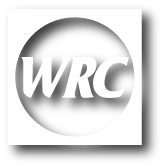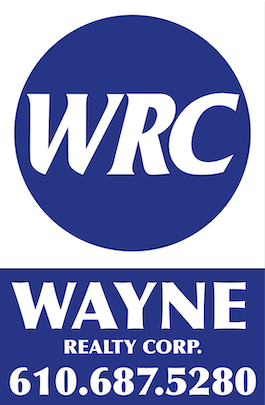Rewriting the Rules of Real Estate: What You Need to Know (Part 1)
The folks at Zillow have been on a quest. They’ve been crunching the numbers (a lot of numbers) on millions of properties in their extensive data base while searching for data-driven truths behind the most common questions and beliefs that come to mind when we think about buying or selling real estate.
The fascinating results are published in Zillow Talk: Rewriting The Rules of Real Estate. Easy to read, the book covers everything from useful transaction tips to big-concept ideas about the eye-opening trends in real estate today. While not a predictive crystal ball, the take-aways could mean thousands of extra dollars in your pocket, and more importantly, a happier home life. Let’s follow the trail of some of the intriguing data points on the journey home.
The Why, When, & Where Rules of Real Estate for Home Buyers
Zillow starts with a basic question: Is it realistic to consider your home as an investment? Based on Zillow’s extensive calculations, the short answer is “yes.” From 1975 to 2014, through all of the ups, downs, and mess in between, the total return on stocks was 10.4% while real estate returned 11.6%.
So, there’s a slight historical advantage for a profit. Plus, your mortgage payment doubles as a savings plan as a portion is applied to the loan principal every month, steadily adding equity. Take a look at your amortization schedule to see exactly how much equity you are socking away.
Also there’s the added benefit of leverage. Zillow Talk covers the types of mortgages and reminds us, while leverage is different for everyone and has some risks, it’s like icing on the cake for appreciation. For instance, if you put down $20,000 on a $200,000 home, and it appreciates at 2% a year ($4,000), then you are leveraging the initial $20,000 down payment for a return of $4,000. That’s actually a 20% return on your down-money building up every year in addition to the principal you are adding to!
When Does It Make Sense to Rent vs. Buy a Home?
Despite the benefits of homeownership there are many good reasons to rent. Given the up-front costs involved with buying a home, the value benefit calculation boils down to the amount of time you expect to live in the home. Zillow says look to your time horizon. If you want the experience of living in Conshohocken or Manayunk for a year or two, then your best bet is to find a house for rent. But if you are ready to put down roots, say in Phoenixville where the market is gaining in popularity or in a convenient neighborhood along the Main Line, there is a breakeven point in time where it makes sense to be an owner. And it will probably take less time than you think before buying vs. renting pays off.
Depending how long you are planning to stay put, Zillow has calculated examples of what they call “Breakeven Horizons” for different cities, with Philadelphia coming in at 2.9 years in 2014. So, in many communities around Philly the financial benefit of owning a home kicks in under three years. You’d have to #crunchthenumbers on the home of your choice. Zillow uses median home prices. Even the more expensive places like Boston and D.C. breakeven after just four years. The recent price re-sets and historically low interest rates are the factors that are benefiting your Breakeven Horizon right now, especially for first time home buyers converting out of rentals.
Where Does It Make Sense to Buy a Home?
If you are looking at homes for sale in Wayne or Radnor or along the Greater Main Line, you probably already know the area’s school districts are a big selling point. That’s just not a local thing. In fact, Zillow reports 91% of people nationwide say the school district is a major deciding factor where they buy a home. So, for resale value and peace of mind it pays to look for affordable homes in the best school districts. That seems obvious, but it takes a little work if you are looking for value.
Don’t be impatient. Neighborhoods with excellent schools might be slightly over your price range, therefore you might be tempted to zero in on a fixer upper or quirky odd ball. Zillow is sure that is a bad idea. The numbers say absolutely it doesn’t pay to buy the worst house in the best neighborhood. It’s the worst house for a reason. Look at it this way – your neighbors could afford one of the other nearby houses and chances are any new buyers coming to the neighborhood can afford the better homes, too. That’s why they are looking there in the first place – to live in a nice area in a nice home. The worst house in the neighborhood is always ignored because it is just that – the worst, and it never appreciates at the same rate as the others.
Know the neighborhood statistics and Zillow says the numbers will show you are better off buying a decent middle-of-the-road house in the most expensive neighborhood you can afford. That’s one of the new rules based on the trend data for better appreciation over time. Stick to the tried and true. Just make sure you pick the best neighborhood you can afford where a decent home for you is not in the bottom ten percent of home prices, hot spots excluded.
So Where’s the Next Hot Spot?
You might be more adventurous and you don’t need to play it so safe in the Philly burbs. You are aware of the classic real estate mantra location, location, location, but homes for sale in Wayne PA are a budget buster, or don’t offer enough house for the money. You’d like to position yourself to score above average appreciation in the next up and coming area, but places like Conshohocken might be too late for that. Conshohocken has a lot to offer, but future gains could be marginal if that’s what you are banking on.
What you seek is future location, future location, future location. But where do you look? Once again, the PhDs at Zillow have made some keen observations based on the data, and I can think of one local small town that looks like a good fit with Zillow’s proven criteria for better than average future gains. Big hint: Think Schuylkill River town poised for gentrification. Ask for my FREE REPORT.
As such, it will pay you to observe what Zillow calls the Halo Effect. Over the years, neighborhoods around the ring of a city’s center have seen the best price appreciation in most major cities. Within the rings there are pockets of hot neighborhoods that connect to the amenities found in the city center. People are willing to pay a premium to live in the kind of neighborhood that has restaurants, cafes, parks, libraries, and fun nightlife. Eventually the quality of life ripples across to the adjoining neighborhoods and prices go up. We’ve seen this all over Greater Philadelphia. After all, Philly is the quintessential city of neighborhoods, each worth getting to know and more than one is in the midst of a boom.
So watch for the ripples. That’s because plenty of people are also willing to live in the next neighborhood over where housing is cheaper, but where the popular hot spot is still accessible. Over time the lesser neighborhood draws in new businesses to cater to the eager residents and values take a leap. The Halo Effect can extend many miles from the city center, especially where there are train lines, new turnpike ramps, or highway extensions like RT422 and RT476 that make it easy to connect to jobs and shopping. Towns like Ambler, Conshohocken, and Phoenixville come to mind. Similarly, the expanding bike trail system throughout the region is playing a part in the connectedness of communities and the quality of recreational life. You can ride a bike from Wayne to the Philadelphia Art Museum and lots of other interesting places.
The next hot spot will also have older housing stock ripe for gentrification. Look for a higher amount of non-owner occupied housing. Landlords will either improve their properties or sell them to people who will. This allows for better than average appreciation as home buyers move into the neighborhood bringing it back to life with new businesses like Starbucks, for instance. Yes, if your new home is within a quarter mile of a Starbucks you could see home values perk up. Zillow’s pun, not mine. There’s a full chapter on the subject in the book.
Take Advantage of Today’s Wealth of Information
As they say, the numbers don’t lie, but where you buy a home is based on countless subjective factors. It’s both an art and a science. Zillow has uncovered some intriguing patterns in the housing data and shared them in plain English for us to adapt to your personal situation. I believe the information is both interesting and valuable for brain storming. I’ll review the book’s critical real estate marketing tips and trends that are specific to home sellers in part two of this blog post.
Let’s end with Zillow’s most important new rule of real estate: Get your hands on as much information as you can. Learn as much as you can about your local market. Crunch the numbers and follow where they lead you in finding your way home. Click here to enjoy a free Neighborhood/School Report of your choice to get started. And don’t forget to ask me about that next potential hot spot!


















